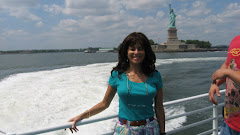I spent time in several interesting cities in Bulgaria from the ports of Burgas and Varna.
Country Background
The Bulgars, a Central Asian Turkic tribe, formed the first Bulgarian state in the late 7th century. In 1389, Bulgaria was overrun by the Ottoman Turks and nearly 500 years later regained independence with Russia's help.
Bulgaria fell under the Soviet sphere of influence and became a People's Republic in 1946. Communist domination ended in 1990, when the country held its first multi-party election since World War II and began moving toward democracy. In 2001, Simeon Borisov Saxe-Coburg, the former king of Bulgaria who was forced from his throne after World War II, returned to power as prime minister.
Bulgaria relies on the Black Sea for fishing, commerce, and tourism at major beach resorts. Varna is the country's largest seaport and second-largest city. Bourgas and Sozopol are the primary fishing ports
My October 2014 Visits
Burgas Port to Nessebar Pomorie Sozol, Ravadinovo
Today, I took a full day shore excursion from the port of Burgas, Bulgaria. Our visits included, 1. The more than 3,000-year-old site of Nessebar, Bulgaria, a UNESCO world heritage site, 2. The well-preserved old town of Sozopol, Bulgaria; 3. Traditional Bulgarian lunch at a seaside resort of Selena along Sozopol’s coast, 4. And 5. 2 sites in Pomorie: a visit to the Thracian tomb and to the monastery St. George the Victorious and 6. A fun visit to a quirky mid evil castle Ravadinovo, near Burgas.
Nessebar, Bulgaria
Its cobbled
streets, well-kept medieval churches, and iconic two-story timbered houses from
the 19th century display evidence of the numerous cultural layers - from the
second millennium BC, from Ancient Times, including the Thracians, and the
Medieval period, until the present time.
Importantly, there remain structures and monuments from each
era.
One of the
oldest towns in Europe , Nessebar, situated on a rocky peninsula and
connected to the mainland by an isthmus, is a rich city museum who's
architectural heritage is defined by more than three millennia of history
including occupations by various groups including The Greeks, The Romans, the
Byzantines, The Turks, the Ottomans, and of course the Bulgarians. It had even been conquered by some of the
Crusaders.
Monuments from the Middle Ages
include the 5–6th century Stara
Mitropoliya ("old bishopric"; also St Sophia), a basilica without a transept; the 6th century church of the Virgin;
and the 11th century Nova Mitropoliya
("new bishopric"; also St Stephen) which continued to be
embellished until the 18th century. In the 13th and 14th century a remarkable
series of churches were built: St Theodore, St
Paraskeva, St Michael St Gabriel,
and St John Aliturgetos
Wooden houses
built in the 19th century are typical of the Black Sea architecture of the
period
Because we visited in October, we enjoyed the luxury of a
visit with very few tourists. The
residents were serious yet friendly people playing the role of background
actors.

Sozopol, Bulgaria
Ancient Sozopol, with its charming old town of meandering
cobbled streets and pretty wooden houses, huddled together on a narrow
peninsula, is a jewel along the coast.
Less crowded than Nessebar, it provides a welcoming canvas for a growing
number of tourists for both its history and its coastal beauty.
Time in Sozopol has different dimensions -
fishermen are still seen catching what the sea has to offer on wooden boats;
older women sit in front of the picturesque houses, chatting, knitting, selling
freshly picked figs, homemade jams and jellies, while almost everyone who
decides to dig in the ground or to build something stumbles upon remnants from
the past – clay vessels, ancient coins, wooden objects, little statues and much,
much more.
Sozopol’s Old Town was declared a museum-reserve by
Ministerial Decree № 320 on September 7, 1974. The reserve includes more than
180 residences, constructed from the middle of the 18th century to the
beginning of the 19th century. Houses in the Old Town are built of stone and
wood and conform to the so-called Black Sea school of architecture.
3-course meal at
Selena Restaurant, in Sozopol: http://www.tripadvisor.com/Restaurant_Review-g635769-d2204934-Reviews-Restaurant_Selena-Sozopol_Burgas_Province.html
The tomb is known as the
hollow hill and presents a corridor, burial chamber and ancillary facilities.
Built according to the Roman building techniques, it is assumed that it
belonged to a wealthy family and was used as a mausoleum and
later on as a temple for providing Thracian religious rituals.
 |
| Karla and Nina, tour guide |
The Monastery St. George the Victorious in Pomorie
The Monastery of St. George is the only functioning
monastery in Southeast Bulgaria with a unique assortment of structures
including an impressive 20-meter high belfry tower, holy spring, and a
collection of paintings and frescos from the 18th and 19th century.
We even toured the mill where they produce their own
distilled spirits. Throughout our visit,
we spotted monks and even a couple of woman engaged in their daily routines.
The present-day church was built in 1856 over the foundations of the preceding one
Here is the websites description which I cannot improve
upon:
The Castle of
Ravadinovo combines various building and decorating styles and materials and it
is definitely interesting to see what some ancient castles must have looked
like when they were new. If you are driving from Burgas down south the Black Sea coast of Bulgaria, there is no chance of missing the
impressive construction of picturesque steeples and towers with some of the
roof trusses still bare- a sight to behold. Many visitors perceive The Castle
of Ravadinovo as an utterly mystical and romantic place, for others, it is the
closest to a Disneyland or fairy tale adventure which they can experience in
this part of the Balkans. The best way to describe the Castle of Ravadinovo is
probably in a statement made by one of its visitors - 'this is the most unusual
building in the most unusual location'. Indeed, the castle bizarrely stands in
the middle of a farm field, just a stone-throw from the highway. Its
architectural design is unusual, a bit extravagant and exotic for this country.
-------------------------------------------------------------------------------------------------------
I found the country to be a very beautiful, the people
were hauntingly sweet navigating their conflict with the past present and
future. The generation gap is huge as
the younger generation is comfortable with and excited about having life
choices---which is unchartered territory for their parents and grandparents
from this former Soviet satellite.
Our ship was also supposed to dock in Varna, a little
farther north in Bulgaria but very choppy seas prevented us from doing so.
I would definitely return and visit the capital of Sofia
in the west.








































































.jpg)
.jpg)



